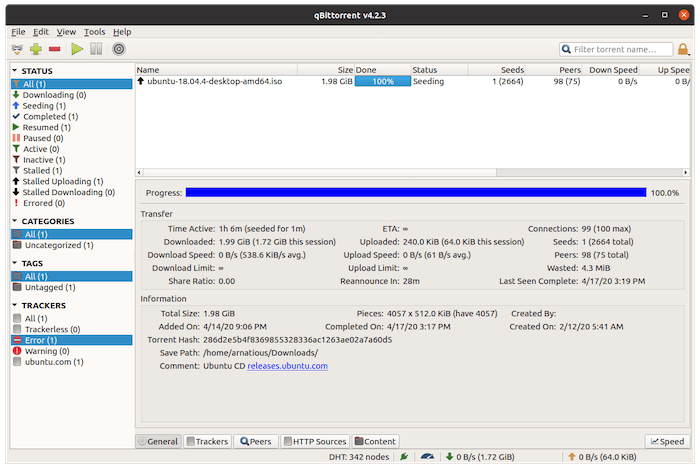How To Install qBitTorrent on Fedora 39

In this tutorial, we will show you how to install qBitTorrent on Fedora 39. qBitTorrent, a powerful and easy-to-use torrent client, is renowned for its lightweight footprint and extensive feature set. It’s an excellent choice for users seeking an alternative to mainstream torrent clients, offering a clean interface and a wealth of options for managing torrent downloads.
This article assumes you have at least basic knowledge of Linux, know how to use the shell, and most importantly, you host your site on your own VPS. The installation is quite simple and assumes you are running in the root account, if not you may need to add ‘sudo‘ to the commands to get root privileges. I will show you the step-by-step installation of the qBitTorrent on a Fedora 39.
Prerequisites
Before diving into the installation process, let’s ensure that you have everything you need:
- A server running one of the following operating systems: Fedora 39.
- It’s recommended that you use a fresh OS install to prevent any potential issues.
- You will need access to the terminal to execute commands. Fedora 39 provides the Terminal application for this purpose. It can be found in your Applications menu.
- A network connection or internet access to download the qBitTorrent repository.
- A
non-root sudo useror access to theroot user. We recommend acting as anon-root sudo user, however, as you can harm your system if you’re not careful when acting as the root.
Install qBitTorrent on Fedora 39
Step 1. First, we need to update all system packages. This ensures that we’re working with the latest software, which includes important security patches and performance improvements. Open your terminal and run the following command:
sudo dnf clean all sudo dnf update
Step 2. Installing qBitTorrent on Fedora 39.
Now navigate to the official qBitTorrent website at https://www.qbittorrent.org/download. Here, you’ll find the latest version of qBitTorrent available for download. As of the time of writing, the current version is v4.6.2.
Scroll down to the section labeled “Linux – AppImage” and click on the link to download the AppImage file. Save the file to a location of your choice on your Fedora system. Remember this location, as you’ll need to access this file in the terminal for the next steps.

After downloading the AppImage, the next step is to make it executable. This step is necessary because AppImages are not executable by default for security reasons. To make the AppImage executable, open the terminal and navigate to the directory where you saved the AppImage file. You can do this using the cd command followed by the path to the directory.
Once you’re in the correct directory, use the following command to make the AppImage executable:
chmod +x qbittorrent-*.AppImage
This command changes the permissions of the file, allowing it to be executed as a program.
Step 3. Accessing qBitTorrent on Fedora.
With the AppImage now executable, you can run it to install qBitTorrent. In the terminal, execute the AppImage using the following command:
./qbittorrent-*.AppImage
This command runs the AppImage, which will launch the qBitTorrent installation process. Follow the on-screen instructions to complete the installation.

After successfully installing qBitTorrent, you can configure it to suit your needs. Upon launching qBitTorrent, you’ll be greeted with a clean, intuitive interface. Here, you can adjust settings such as download and upload limits, connection settings, and torrent queueing preferences. Take some time to explore the various settings and configure them to your liking.
Step 4. Troubleshooting Common Issues.
While the installation process is generally straightforward, you may encounter some issues. Here are solutions to some common problems:
- Problem: The AppImage won’t run, even after making it executable.
Solution: Ensure that you’re in the correct directory and that the filename in your command matches the filename of the AppImage. - Problem: qBitTorrent doesn’t launch after installation.
Solution: Try running the AppImage again. If the problem persists, reboot your system and try again. - Problem: Changes to settings in qBitTorrent aren’t being saved.
Solution: Make sure to click “Apply” after making changes to the settings. If the issue persists, it may be a permissions issue. Try running qBitTorrent as an administrator.
Congratulations! You have successfully installed qBitTorrent. Thanks for using this tutorial for installing the qBitTorrent on your Fedora 39 system. For additional or useful information, we recommend you check the official qBitTorrent website.